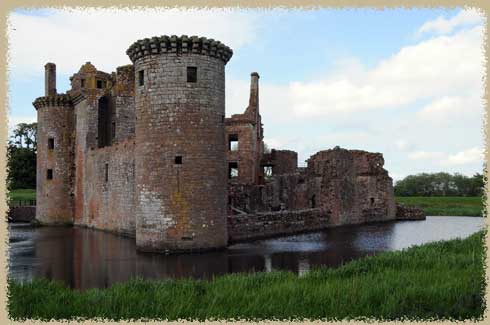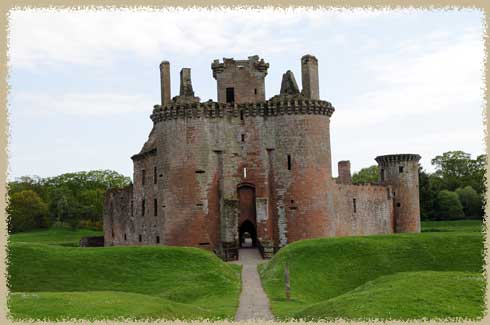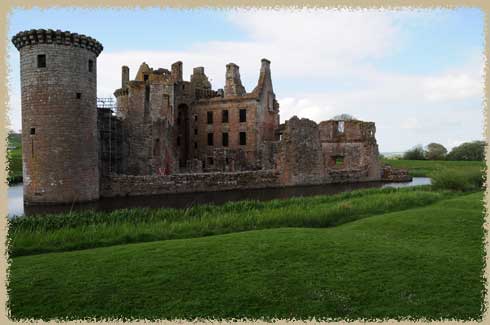Caerlaverock Castle
Caerlaverock is oen of my favorite castles -- it's just so damn castle-y, with the moat and hills and round towers. This is how castles are supposed to look!

looked into the ruined courtyard from the rear of the castle
13th century moated castle
The site at Caerlaverock has been fortified for millennia. The romans had an outpost here, and the remains of one of their camps lies just to the west. The original castle site also stands a short walk through the swamp to the rear of the stone keep. Historic Scotland is in the process of organizing an archeological dig here, which is very interesting. The site they are excavating may have been the location of the original castle, or merely a temporary site that was occupied when Caerlaverock was being restored. The ground is marshy and wet, and is an unsuitable place for a stone castle.
Caerlaverock actually has two moats that surround the stone walls.The undulating ground would be a strong deterrend to an attack, but the long sloping plains were good siege-ground.
Considered one of the strongest castles in Scotland, Caerlaverock is built as a triangle with huge towers on each corner. It was probably built between 1280-1300 by the English during a struggle between Edward I and the Scots, replacing an earlier stone castle nearby. It is the only triangular plan castle in the UK.

looking down the main avenue to the twin-barrelled gatehouse
It was esieged in 1300 by Edward I, and Caerlaverock surrendered, after which the English held it for 12 years. Then, the master of the Castle changed sides and dismantled the castle in accordance with Robert Bruce's policy of slighting castles to prevent them from being used by the enemy. It was dismantled by 1357, but may have been repaired by the 1370s, although there are no records of it being occupied until 1425, when Murdoch, Duke of Albany, was imprisoned in the tower that bears his name.
Caerlaverock was rebuilt once again in the 15th century, carefully following the original design to restore it. It was successfully defended against the king in 1640 by Covenanters.
James V visited the castle in 1542. It was surrendered to the English in 1545 as part of a settlement, but was promptly recaptured by the Scots, and then taken back again by the English in 1570.

looking into the
nithsdale lodgings block from the side


